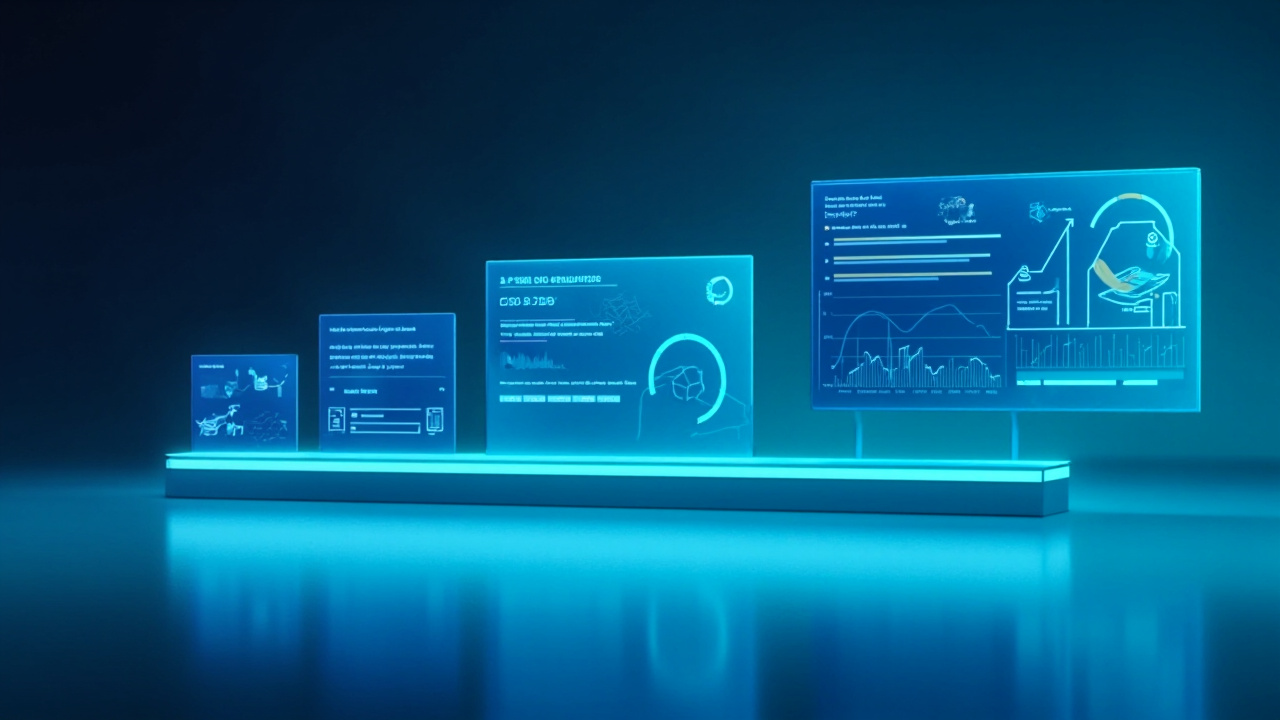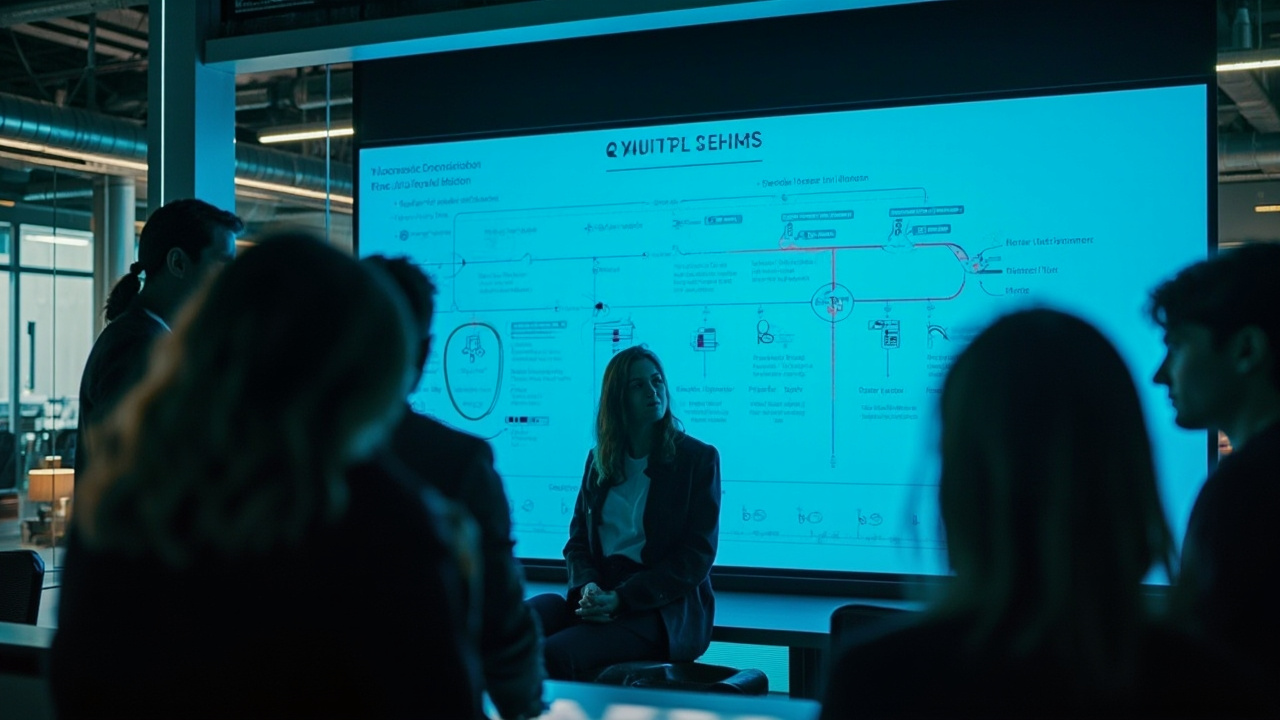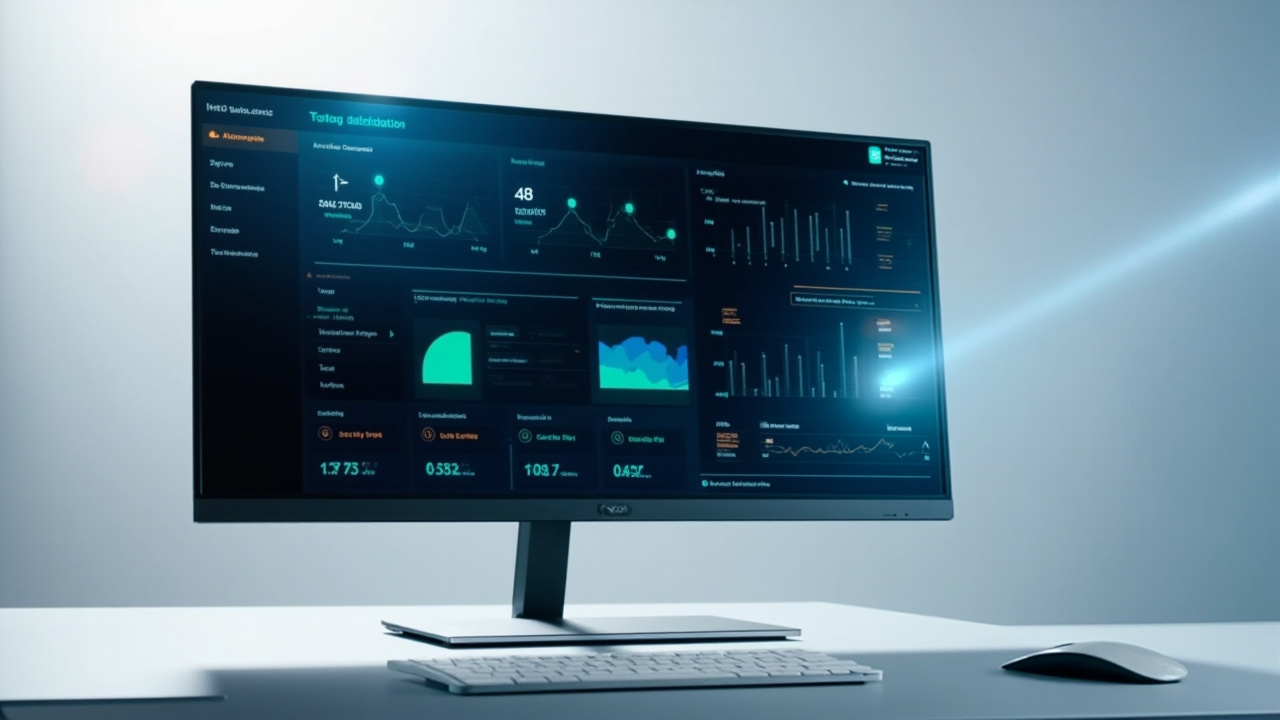Revolutionizing Software Testing: Navigating the Future of Quality Assurance
In the rapidly evolving world of software development, quality assurance has transcended from being a back-office function to a strategic necessity. As organizations race to deploy robust applications faster, traditional software testing paradigms struggle to meet the demand. Enter the era of intelligent testing solutions, where artificial intelligence (AI) and machine learning (ML) are not just buzzwords but pivotal tools reshaping the landscape. This article delves deep into the intricacies of software testing, exploring innovative methodologies, the challenges faced, and how cutting-edge tools like GenQE are transforming the industry.
Software testing is the backbone of any successful software deployment. It ensures that applications run as intended, providing users with a seamless experience while safeguarding against defects that could lead to catastrophic failures. However, as software systems become increasingly complex, the limitations of conventional testing methods become glaringly apparent. Manual testing is labor-intensive and error-prone, while automated testing, although efficient, requires significant setup and maintenance efforts. The need for smarter, more adaptive testing solutions has never been more pressing.
In this comprehensive blog post, we will explore how software testing has evolved over the years, the critical challenges testers face today, and how AI-driven solutions like GenQE are revolutionizing the field. We’ll examine the rise of agile methodologies, the integration of testing into continuous integration/continuous deployment (CI/CD) pipelines, and the pivotal role AI plays in enhancing testing efficiency and accuracy. By the end of this article, you will have a nuanced understanding of modern software testing and the tools that are paving the way for more reliable and efficient software development processes.
The Evolution of Software Testing: From Manual to AI-Driven Approaches

The journey of software testing has been one of constant evolution, shaped by technological advancements and the ever-increasing demands of the software industry. This section delves into the historical context, highlighting key milestones that have defined the trajectory of software testing.
The Early Days: Manual Testing and Its Limitations
In the early days of software development, testing was predominantly a manual process. Testers would execute test cases manually, comparing the actual output of software against the expected results. While this approach was straightforward, it was also time-consuming and prone to human error. As software grew more complex, the limitations of manual testing became increasingly evident.
“Manual testing, though foundational, could not scale with the burgeoning complexity of modern software systems.”
The reliance on human testers meant that manual testing was inherently limited by human capacity and subjectivity. Testers could overlook defects, and the repetitive nature of the work often led to fatigue and decreased accuracy. Moreover, manual testing struggled to keep pace with the rapid development cycles demanded by modern software projects.
The Dawn of Automation: Enhancing Efficiency and Coverage
The introduction of automated testing tools marked a significant leap forward in software testing. By automating repetitive tasks, these tools increased testing efficiency and allowed for greater test coverage. Test automation frameworks like Selenium and JUnit became staples in the tester’s toolkit, enabling the execution of large volumes of test cases quickly and consistently.
However, automated testing was not without its challenges. Setting up automated tests required significant initial investment in terms of time and resources. Additionally, maintaining test scripts was an ongoing challenge, particularly in dynamic environments where UI elements frequently changed. This challenge paved the way for the next evolution in testing: the integration of AI and ML.
AI and ML: The New Frontier of Software Testing
AI and ML have ushered in a new era of software testing, characterized by intelligent, adaptive, and efficient processes. AI-driven testing platforms like GenQE leverage machine learning algorithms to generate and execute test cases, analyze results, and provide actionable insights. These tools reduce the dependency on manual test case design, improve coverage, and enhance the accuracy of defect detection.
By automating and optimizing test generation and execution, AI-driven tools address the limitations of both manual and traditional automated testing. They offer self-healing capabilities that adapt to changes in the software environment, reducing the maintenance burden on testers. Moreover, AI’s ability to analyze historical data and user behavior allows for more targeted and risk-based testing approaches.
As we transition into an era of AI-driven testing, the focus shifts from merely executing tests to understanding and improving software quality holistically. This transformation is not just about speed and efficiency; it’s about empowering testers to focus on more strategic, value-adding activities.
Agile Testing: Adapting to Rapid Development Cycles

Agile methodologies have revolutionized software development, promoting flexibility, collaboration, and rapid iteration. In this section, we explore how agile principles have reshaped the testing landscape and the strategies that testers employ to thrive in agile environments.
Understanding Agile Testing: A Paradigm Shift
Agile testing is not a separate phase but an integral part of the agile development process. It emphasizes continuous testing throughout the development cycle, allowing for early detection and resolution of defects. This approach contrasts sharply with traditional models where testing occurs at the end of the development process.
“In agile environments, testing is a collaborative effort, integrated seamlessly with development to ensure quality at every stage.”
The agile manifesto prioritizes individuals and interactions over processes and tools, which translates into a more collaborative approach to testing. Testers work closely with developers, product owners, and other stakeholders to understand requirements, provide feedback, and ensure that each iteration delivers a potentially shippable product.
The Challenges of Agile Testing
While agile testing offers numerous benefits, it also presents unique challenges. The rapid pace of development means that testers must adapt quickly to changing requirements and priorities. Additionally, the emphasis on collaboration requires testers to possess strong communication and interpersonal skills.
Testers must also navigate the complexities of testing in short sprints, often with limited time and resources. This necessitates the use of efficient testing strategies, such as risk-based testing and exploratory testing, to prioritize and focus efforts on high-impact areas.
Integrating AI Tools in Agile Testing
AI-powered testing tools like GenQE offer valuable support in agile environments by automating routine tasks and providing intelligent insights. GenQE’s AI-driven test generation capabilities enable teams to quickly create comprehensive test cases, while its smart test execution features prioritize critical areas based on risk analysis.
The integration of AI tools into agile testing processes not only enhances efficiency but also empowers testers to focus on more strategic activities. By automating routine tasks, testers have more time to engage in exploratory testing, collaborate with developers, and contribute to the overall quality of the software.
As organizations continue to embrace agile methodologies, the role of AI in testing will only grow. By leveraging AI tools, teams can achieve the agility and efficiency needed to thrive in fast-paced development environments.
The Role of Continuous Integration and Continuous Deployment in Testing

Continuous Integration (CI) and Continuous Deployment (CD) have become cornerstones of modern software development, enabling teams to deliver high-quality software rapidly and reliably. In this section, we examine how CI/CD practices impact software testing and the strategies testers employ to ensure seamless integration into these pipelines.
The Fundamentals of CI/CD
CI is a development practice where developers integrate code into a shared repository frequently, often multiple times a day. Each integration triggers an automated build and testing process, allowing teams to detect and address issues early. CD extends CI by automating the deployment of code to production, ensuring that software is always in a deployable state.
“CI/CD practices ensure that software is always ready for deployment, reducing the time between writing code and delivering it to users.”
The adoption of CI/CD practices has transformed the software development lifecycle, promoting faster feedback loops, reduced cycle times, and improved collaboration across teams. However, integrating testing into CI/CD pipelines presents unique challenges that require careful planning and execution.
Testing in a CI/CD Environment
Testing in a CI/CD environment requires a shift from traditional testing approaches to more automated and streamlined processes. Automated testing is crucial, as manual testing cannot keep pace with the rapid integration and deployment cycles of CI/CD. Testers must focus on creating robust and reliable automated test suites that can be executed quickly and efficiently.
The use of containerization and virtualization technologies, such as Docker and Kubernetes, further enhances testing in CI/CD environments by providing consistent and isolated testing environments. This ensures that tests are reproducible and not affected by external factors.
Leveraging AI Tools in CI/CD Pipelines
AI-powered testing platforms like GenQE offer significant advantages in CI/CD environments by automating test generation, execution, and analysis. GenQE’s seamless integration with popular CI/CD tools like Jenkins, GitHub Actions, and Azure DevOps ensures that testing is an integral part of the development pipeline.
By leveraging AI tools, teams can optimize testing processes, reduce the time spent on manual tasks, and focus on improving software quality. GenQE’s advanced analytics and reporting features provide valuable insights into software quality trends, helping teams make informed decisions and prioritize testing efforts.
As organizations continue to adopt CI/CD practices, the integration of AI tools will play a critical role in ensuring that testing processes are efficient, reliable, and scalable.
Overcoming Common Testing Challenges in Modern Development

Software testing is fraught with challenges that can hinder the delivery of high-quality applications. In this section, we explore some of the most common testing challenges faced by teams and the strategies employed to overcome them.
Managing Test Environments and Data
One of the most significant challenges in software testing is managing test environments and data. Test environments must mirror production environments closely to ensure accurate and reliable test results. However, setting up and maintaining these environments can be complex and resource-intensive.
“Accurate test environments are crucial for reliable testing outcomes, but they often require significant effort to set up and maintain.”
Test data management is another critical aspect, as data must be realistic, relevant, and compliant with privacy regulations. Generating and maintaining test data that meets these criteria can be challenging, especially in environments with complex data dependencies.
Ensuring Comprehensive Test Coverage
Achieving comprehensive test coverage is essential for ensuring software quality, yet it remains a challenge for many teams. With the increasing complexity of software systems, ensuring that all possible scenarios and edge cases are covered requires significant effort and expertise.
Testers must employ a combination of testing techniques, such as boundary testing, equivalence partitioning, and pairwise testing, to achieve thorough coverage. Additionally, AI-powered tools like GenQE can aid in test generation and prioritize critical areas, ensuring that high-impact defects are identified early.
Balancing Speed and Quality in Agile Environments
In agile environments, the pressure to deliver software quickly can sometimes come at the expense of quality. Testers must strike a delicate balance between speed and thoroughness to ensure that software meets quality standards without delaying delivery.
Implementing risk-based testing strategies can help prioritize testing efforts, focusing on areas that pose the greatest risk to the software’s functionality and user experience. AI tools like GenQE can further enhance this process by providing intelligent insights and recommendations based on historical data and user behavior.
As software development continues to evolve, overcoming these challenges requires a combination of strategic planning, innovative tools, and a commitment to quality. By leveraging AI-powered testing platforms and adopting best practices, teams can navigate these challenges and deliver high-quality software consistently.
The Impact of AI on Defect Detection and Prevention

Defect detection and prevention are critical components of software testing, directly impacting the quality and reliability of applications. In this section, we explore how AI is transforming defect detection and prevention strategies, offering new possibilities for enhancing software quality.
AI-Powered Defect Detection
AI-driven testing platforms like GenQE utilize machine learning algorithms to analyze test results and identify patterns that may indicate defects. By learning from historical data, these tools can detect anomalies and potential defects early in the development cycle, allowing teams to address issues before they reach production.
“AI-powered defect detection enables teams to identify and address issues early, preventing critical defects from impacting users.”
The use of AI in defect detection enhances accuracy and efficiency, reducing the reliance on manual inspection and analysis. This proactive approach not only improves software quality but also reduces the cost and effort associated with fixing defects later in the development process.
Defect Prevention Through Predictive Analytics
AI’s capabilities extend beyond defect detection to defect prevention. Predictive analytics, powered by AI, allows teams to anticipate potential defects based on historical data and user behavior. By identifying areas of the code that are likely to introduce defects, teams can focus their efforts on improving these areas, thereby preventing issues from arising.
This shift from reactive to proactive defect management is a significant advancement in software testing, enabling teams to deliver higher-quality software with fewer defects. AI-powered tools like GenQE provide the insights needed to implement effective defect prevention strategies, reducing the overall defect rate and improving user satisfaction.
The Future of Defect Management
As AI continues to advance, its impact on defect management will only grow. The integration of AI tools into testing processes will become increasingly commonplace, offering new opportunities for enhancing software quality and reliability.
By leveraging AI-powered defect detection and prevention tools, teams can achieve a level of quality assurance that was previously unattainable, delivering software that meets the highest standards of reliability and performance.
Advanced Analytics and Reporting: Driving Informed Decision-Making

In today’s data-driven world, advanced analytics and reporting are essential components of effective software testing. This section explores how AI-powered tools are transforming analytics and reporting, providing teams with the insights needed to make informed decisions and continuously improve software quality.
The Role of Advanced Analytics in Testing
Advanced analytics involves the use of data analysis techniques to extract meaningful insights from testing data. AI-powered testing platforms like GenQE leverage advanced analytics to provide teams with detailed insights into software quality trends, defect patterns, and testing efficiency.
“Advanced analytics empowers teams to make data-driven decisions, continuously improving software quality and testing processes.”
These insights enable teams to identify areas for improvement, optimize testing strategies, and prioritize efforts based on risk and impact. By understanding the underlying trends and patterns in testing data, teams can make informed decisions that enhance software quality and reliability.
AI-Driven Reporting and Dashboards
AI-driven reporting tools offer dynamic, interactive dashboards that provide real-time insights into testing processes and software quality. These dashboards offer a comprehensive view of key metrics, such as test coverage, defect rates, and testing efficiency.
The ability to customize reports and visualize data in meaningful ways allows teams to communicate insights effectively to stakeholders, facilitating collaboration and informed decision-making. AI-driven reporting tools also offer predictive insights, helping teams anticipate potential issues and prioritize testing efforts.
Continuous Improvement Through Data-Driven Insights
The integration of advanced analytics and reporting into testing processes promotes a culture of continuous improvement. By leveraging data-driven insights, teams can identify areas for improvement, implement corrective actions, and measure the impact of these actions on software quality.
AI-powered tools like GenQE provide the insights needed to drive continuous improvement, offering teams the ability to deliver high-quality software consistently and efficiently. As organizations continue to embrace data-driven approaches, the role of advanced analytics and reporting in testing will only grow, offering new opportunities for enhancing software quality.
Conclusion: Embracing the Future of Software Testing

The landscape of software testing is undergoing a profound transformation, driven by technological advancements and the increasing demands of the software industry. As we have explored in this article, AI-powered tools like GenQE are revolutionizing the field, offering new possibilities for enhancing testing efficiency, accuracy, and coverage.
From the evolution of testing methodologies to the integration of AI in agile and CI/CD environments, the future of software testing is bright. By embracing AI-driven solutions, teams can navigate the challenges of modern development, delivering high-quality software that meets the needs of users and stakeholders.
As you reflect on the insights shared in this article, consider exploring the innovative tools and approaches that are shaping the future of software testing. Whether it’s leveraging AI-powered defect detection or implementing advanced analytics and reporting, the opportunities for improvement are vast, and the potential for enhancing software quality is limitless.
“The future of software testing is not just about keeping pace with change; it’s about leading the way with innovation and intelligence.”
Explore the possibilities and embrace the future of software testing. By integrating advanced tools and methodologies into your testing processes, you can achieve new levels of quality and reliability, positioning your organization for success in an ever-evolving digital landscape.
Discover More Innovative Solutions
Want to learn more about the tools and technologies discussed in this article? Explore how these innovations can be tailored to your specific needs and workflow requirements.
Our team of experts is available to answer your questions and provide personalized insights into how modern solutions like GenQE can address your specific challenges.
